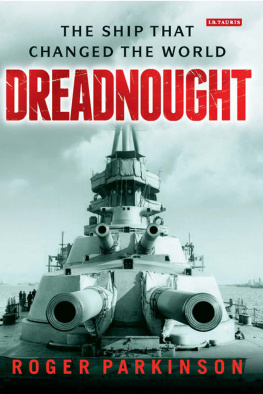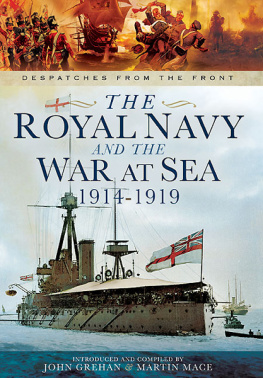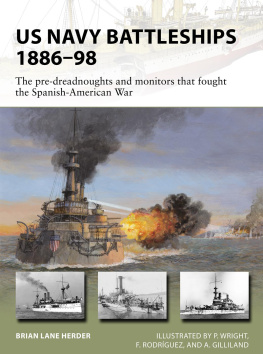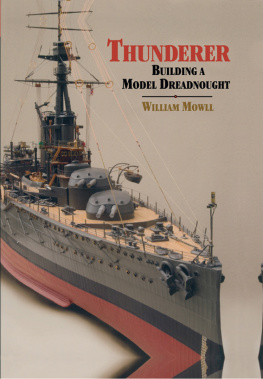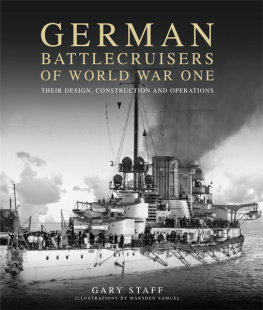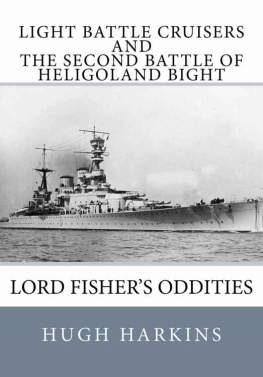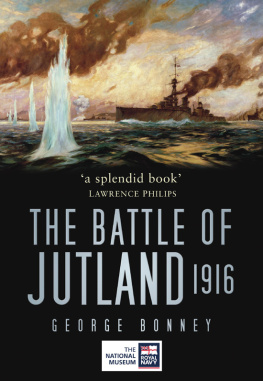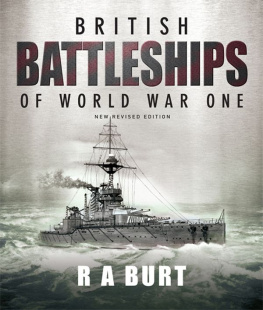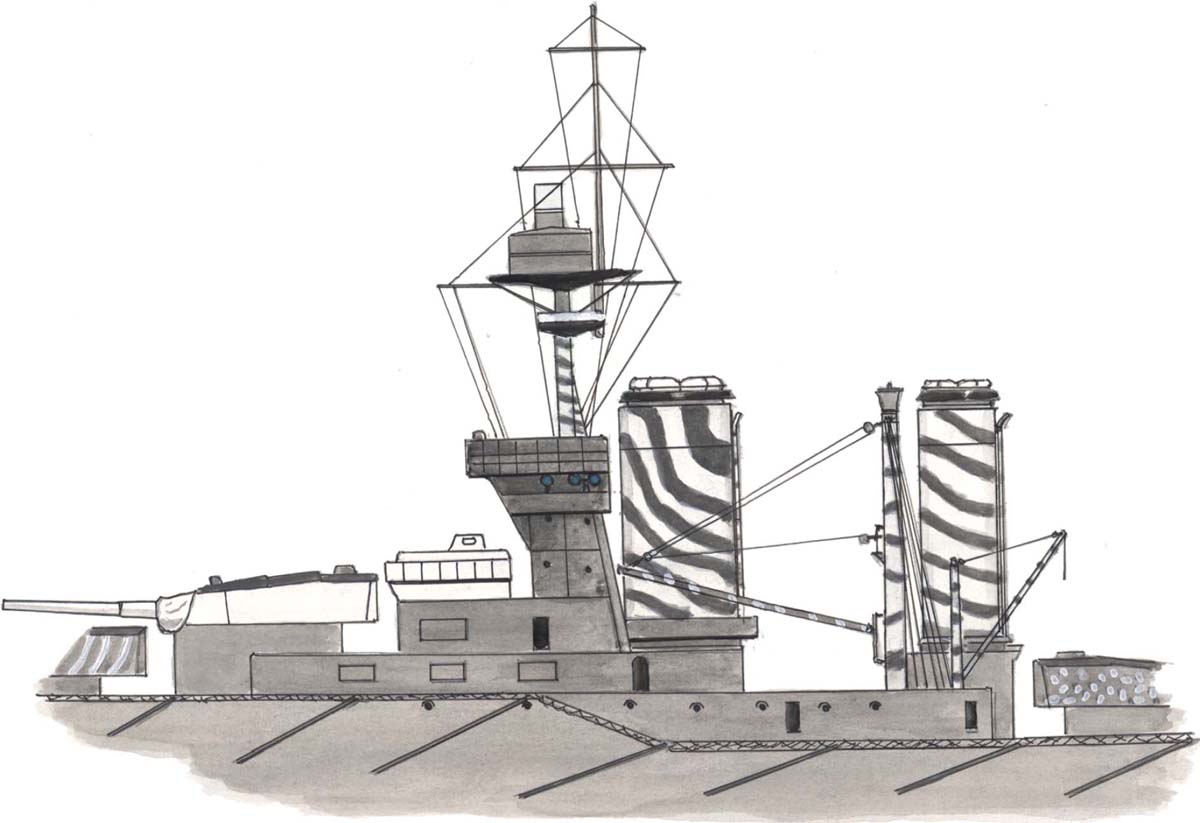
AUDACIOUS SEPTEMBER 1914.
Dark slate grey with white guns and turrets (B and X). White converging lines on funnels, masts and remaining turrets.
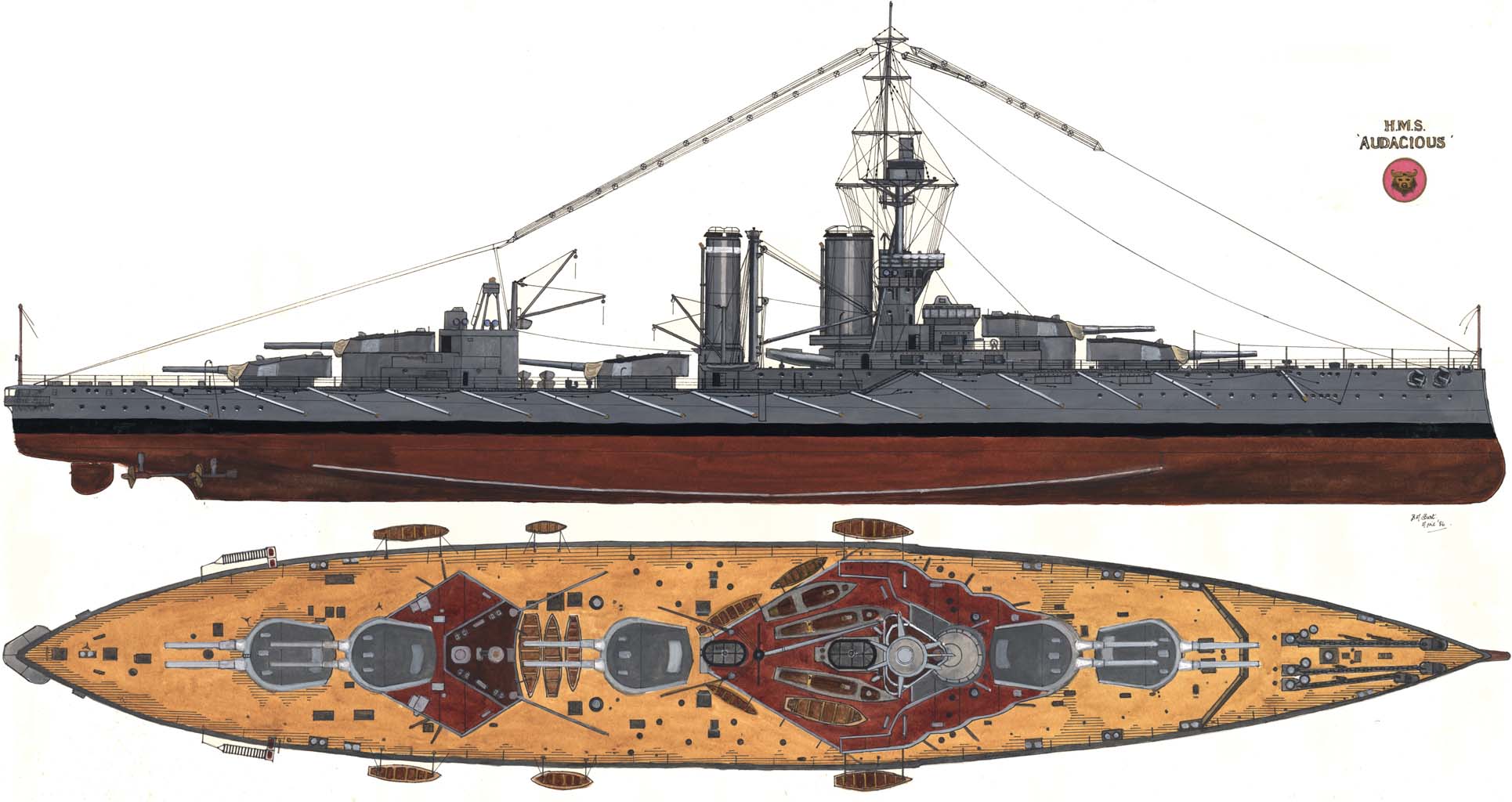
AUDACIOUS PLAN AND PROFILE 1914.
At the outbreak of war in August 1914 all British battleships were wearing a dark slate grey paintwork scheme. So dark was the shade of grey that photographic film sometimes had trouble in recording the ships without losing detail in the shadows. White (some red) recognition bands on funnels stood out boldly but these were quickly painted out on the outbreak of hostilities.
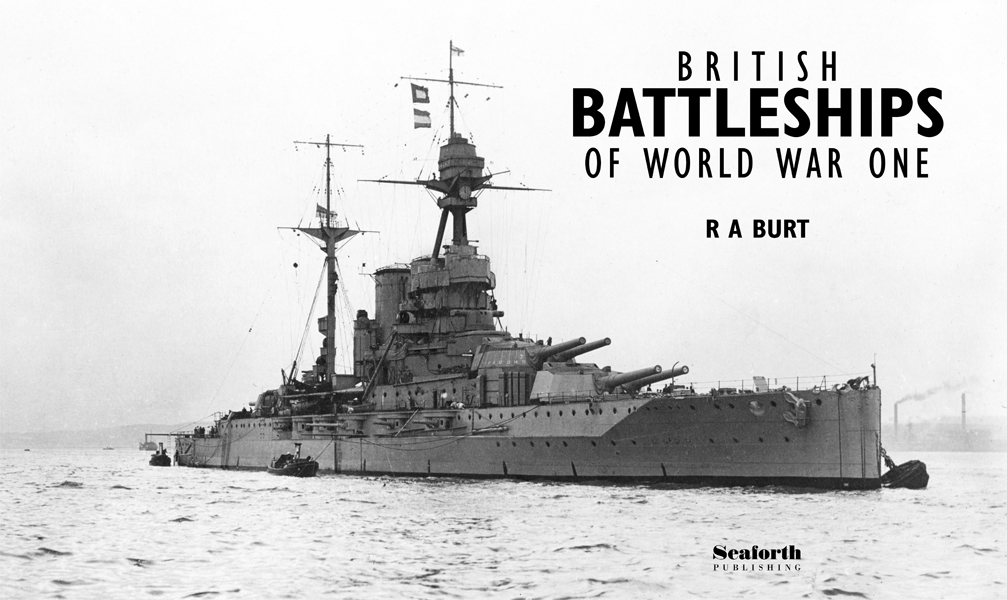
Overleaf: Queen Elizabeth at anchor in the Firth of Forth just a few days after the surrender of the High Seas Fleet (Nov 1918), the conference for the surrender being held in her wardroom between Admiral David Beatty and Rear Admiral Meurer.
Acknowledgements
During the six years this book has been in preparation, the author has been indebted to the following persons and establishments. In particular, I should like to extend sincere thanks to David Lyon, Michael Dandridge and Mrs Pilkington of the Draught Room at the National Maritime Museum, Greenwich; to David Brown and his staff at the Naval Historical Library; to D. W. Robinson, Press Officer, and to P. H. Judd, Chief Naval Architect, both of Vickers Shipbuilding Group. I must also acknowledge the help received from A. M. Ingham of the Naval Ordnance Museum, Priddys Hard, and appreciation is also due to my editor, Michael Boxall, J. A. Roberts, A. S. Norris, the late P. A. Vicary and, especially, the late W. P. Trotter M.C., who gave me much sound advice and great encouragement throughout the years I knew him. Much gratitude is expressed to my publishers; in particular to David Gibbons and Anthony A. Evans, both of whom pointed out items I might otherwise have missed. Finally, to my wife Janice and our two children must go special mention for their patience and encouragement; indeed, if it were not for their making sacrifices to their lifestyle and enjoyment, I doubt if the work could have been completed. The photographs are all from the authors collection; the drawings are based on the official shipbuilding draughts now held at the National Maritime Museum, Greenwich.
R.A.B.
Copyright R A Burt 1986
This edition first published in Great Britain in 2012 by
Seaforth Publishing, an imprint of Pen & Sword Books Ltd,
47 Church Street, Barnsley S70 2AS
www.seaforthpublishing.com
British Library Cataloguing in Publication Data
A catalogue record for this book is available from the British Library
ISBN 978 1 84832 147 2
eISBN 9781848322769
All rights reserved. No part of this publication may be reproduced or transmitted in any form or by any means, electronic or mechanical, including photocopying, recording, or any information storage and retrieval system, without prior permission in writing of both the copyright owner and the above publisher.
The right of R A Burt to be identified as the author of this work has been asserted by him in accordance with the Copyright, Designs and Patents Act 1988.
Contents
Preface
I n general, collectors of historical warship photographs and naval enthusiasts and historians are a pretty mixed group of people. They come from all walks of life and range from motor mechanics to Members of Parliament; for some strange reason there is usually a heavy sprinkling of doctors and solicitors. But what starts a persons enthusiasm off? Be it serious research or gathering collectables on yesterdays navies, it is an enthusiasm that usually turns into an obsession (in the nicest possible way). The reasons are many, but in most cases cannot be explained very easily. At the turn of the century, it was not at all common for anyone other than naval personnel to gather ships statistics or indeed collect photographs of warships. In fact, other than a few resident photographers such as West, Hopkins, Cribb, Long and Symonds, who sold their photographs commercially, pictures of many warships of the day were extremely difficult to procure.
One of the more notable characters of the time was F. T. Jane, a journalist and correspondent during the Boer War, who turned his attention toward warship design and construction. He became deeply involved in naval affairs, and one could read his biting remarks in most of the naval periodicals as well as in the daily newspapers. His brainchild was, of course, that now famous album All the Worlds Fighting Ships , which appeared for the first time in 1897, the year of Queen Victorias Diamond Jubilee. Throughout the initial preparation for the book, Jane was involved in making a series of small sketches of all major warships then in existence, and for help he turned to one of the more notable photograph collectors of the day, W. A. Beiber, who in turn was kind enough to lend Jane scores and scores of rare prints for reference. It took Jane eighteen months to complete the work and, in his own words, it nearly gave me brain fever. The book was to become more popular with both the Service and the public than any major naval reference work previously published.
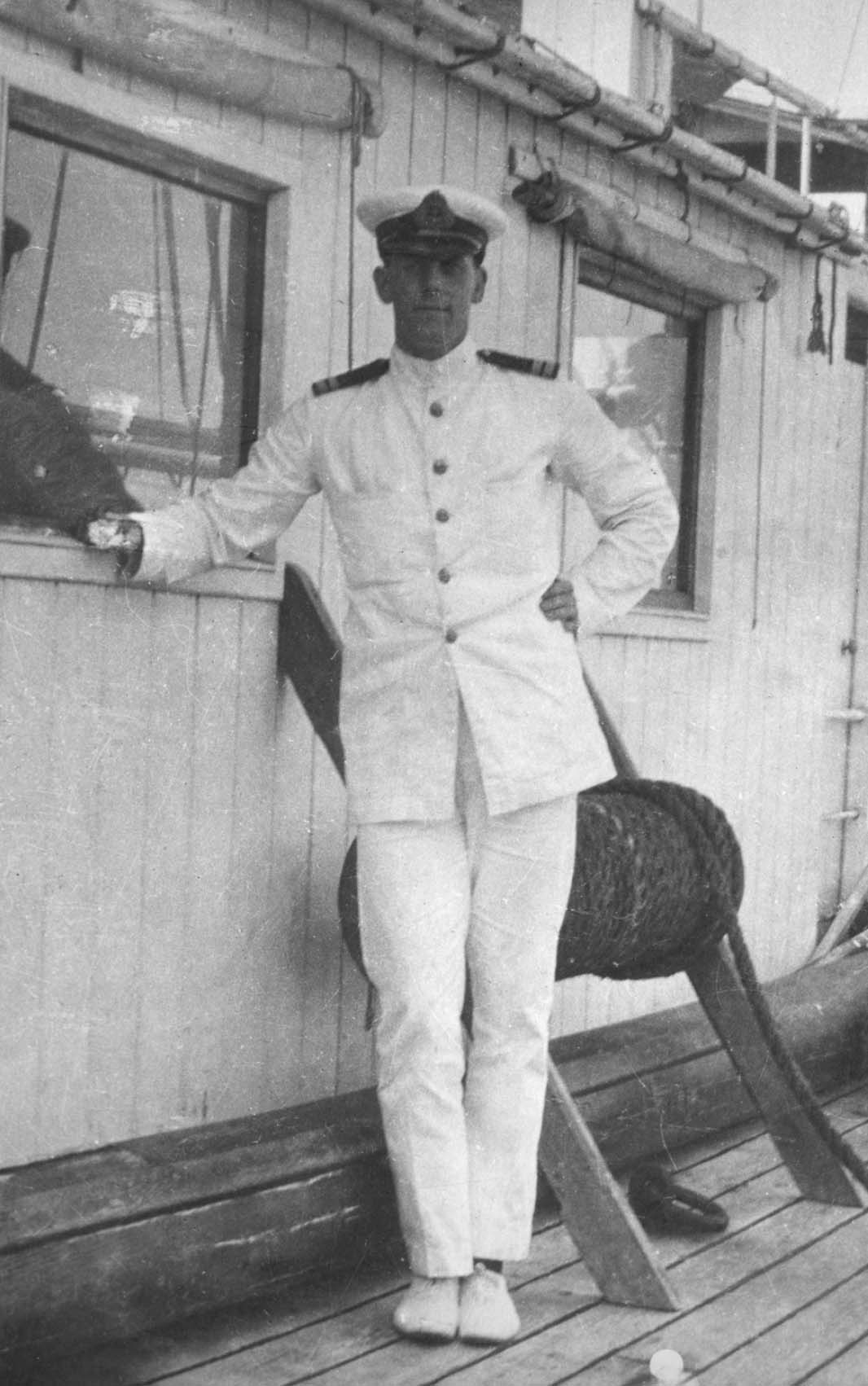
Dr Oscar Parkes in his Mediterranean outfit during his service in the Navy at the Dardanelles campaign, 1915.
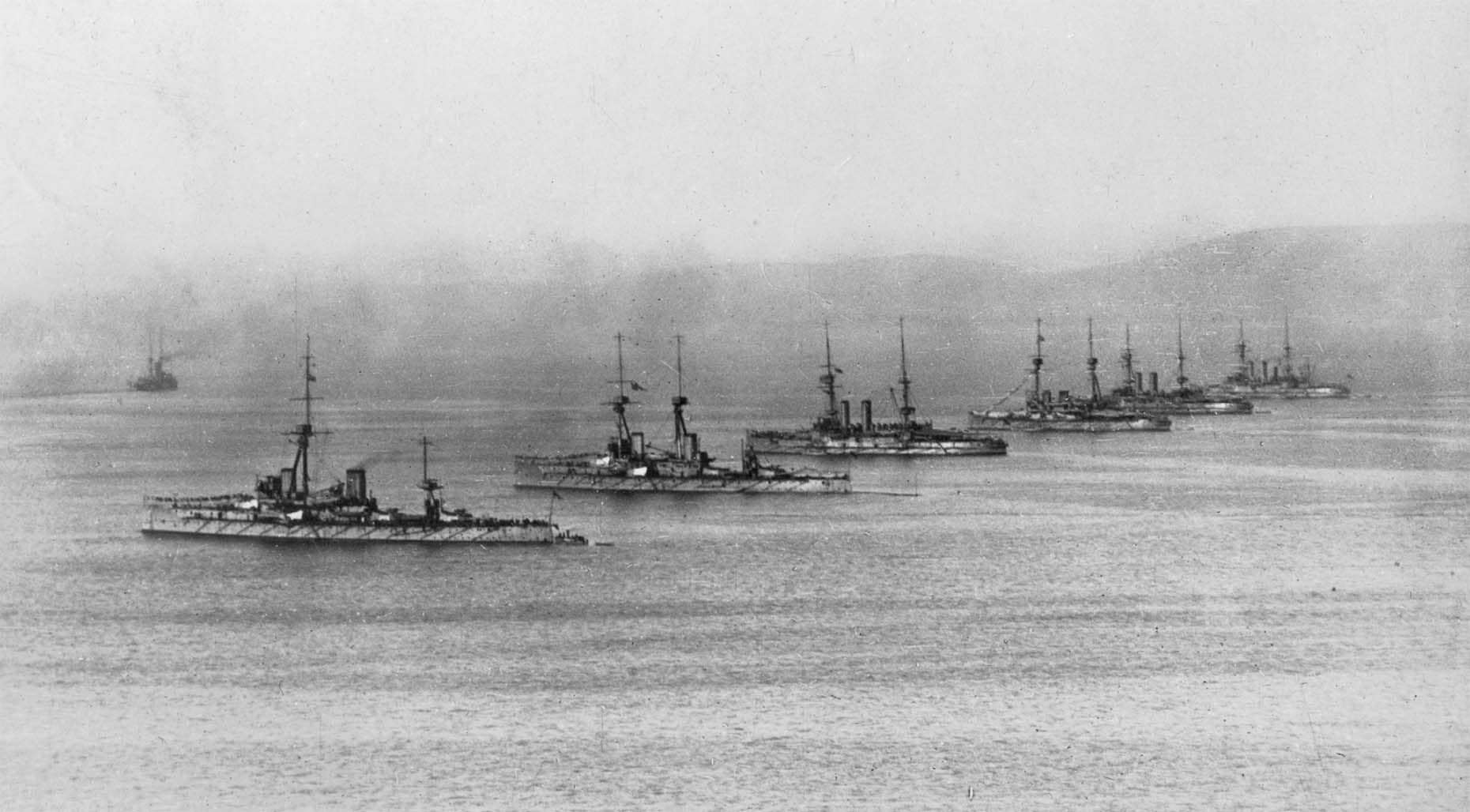
Arrival of the dreadnoughts within the British Fleet. Anchored here at Scapa Flow, Dreadnought and Bellerophon lie alongside the pre-dreadnoughts Implacable, Lord Nelson, Irresistible and Bulwark .
There were no photographs in that first edition, nor indeed for the next few years, but for the 1903 edition it was found possible to include a few real views. This was very well received, and it was only a matter of time before the annual featured photographs for the majority of ships within its pages. To supply the increase in views needed, naval photographers were suddenly in great demand: and names such as Cribb, Seward, Bekan, Abrahams, Cozens, Gregory, Hopkins and Symonds were soon familiar to the ever-growing number of warship enthusiasts. In short, Janes famous annual went a long way to encourage many to start becoming involved in naval matters.
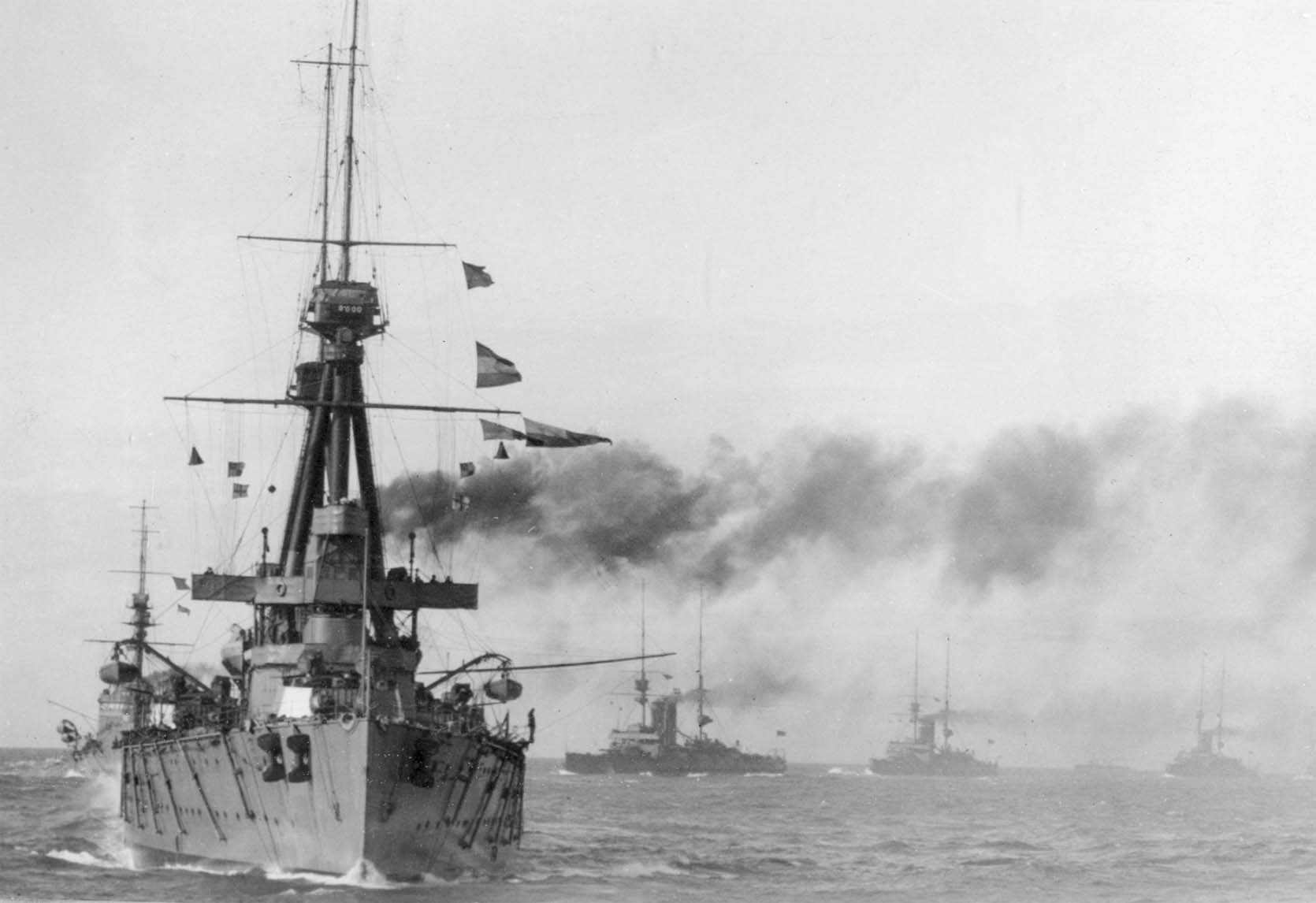
Inflexible leads units of the pre-dreadnought King Edward VII class during manoeuvres in 1909.
One of the greatest warship historians of the twentieth century was soon to become actively involved with Jane; and Dr Oscar Parkes, who was deeply concerned in naval affairs, showed an enthusiasm found in few people. One can do no better than relate his own jottings on how he became a collector and enthusiast:
How long have you been interested in warships? is a common enough question between ship lovers, usually to be met with a full account of how the interest came about. My own goes back to a very early age in fact, as far back as memory can reach, and that is to an infants high folding chair. This, when broken, provided a play table upon which was displayed strange composite pictures flanked on each side by a row of large coloured wooden beads on a rod. These latter may have helped in teaching one to count; to the former I owe my love of ships and locomotives because it displayed both warships and a train. Of the train I remember nothing except that it symbolised the real thing which sometimes could be seen from my pram when one of our several walks took us across the bridge below which ran the branch L&NWR line. But the ship! she was indeed a strange misshapen thing, which afterwards I knew to be the Devastation and in the middle of the eighties she and her sister Thunderer were still regarded by the man in the street as the symbols of Britains greatness afloat.











